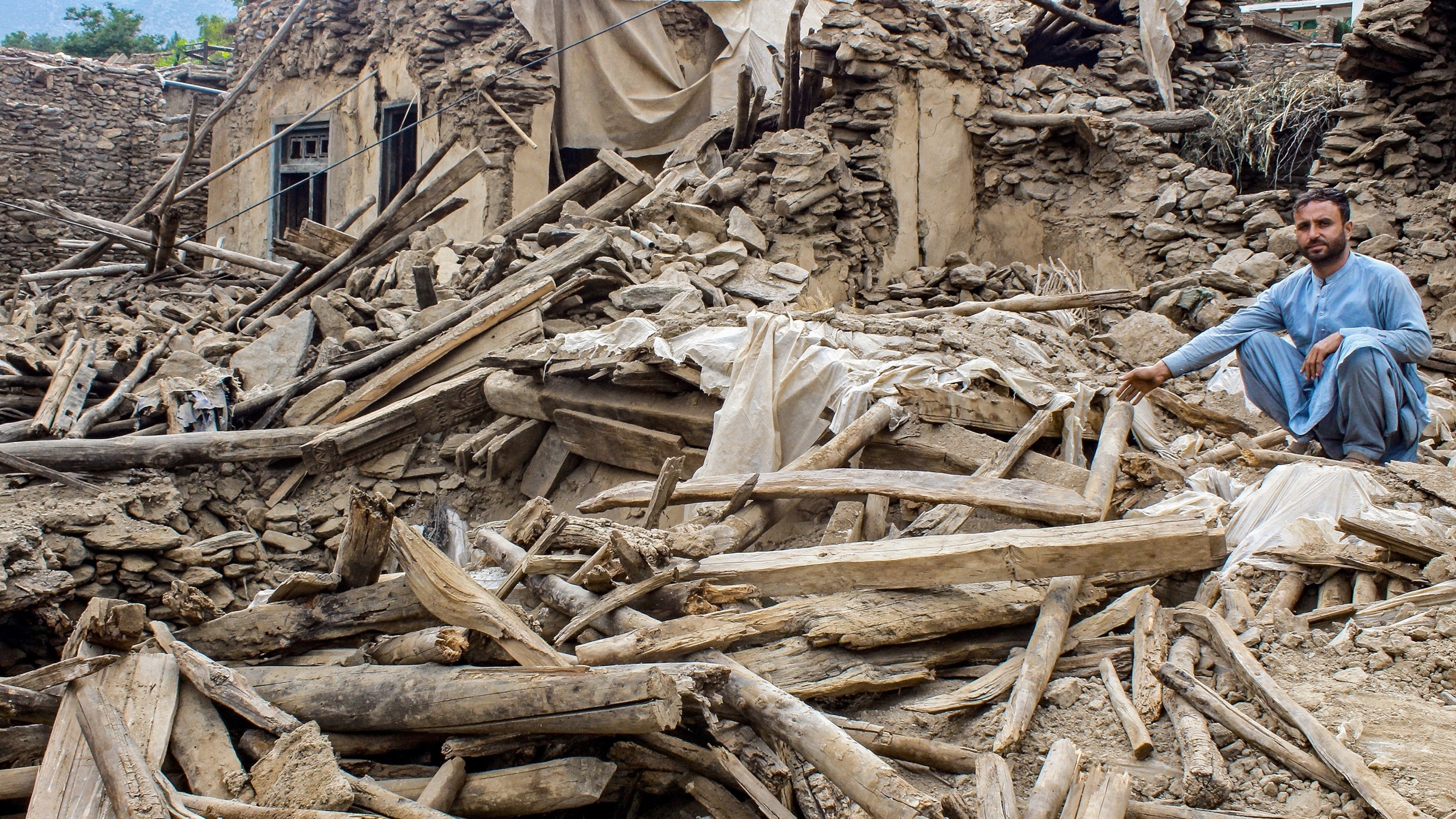Another Earthquake Strikes Eastern Afghanistan as Death Toll from Earlier Quake Rises to 2,205
Taliban spokesman reports more than 2,200 dead and 3,640 injured after a 6.0 magnitude quake; a 5.6 aftershock hits as search and rescue continues amid blocked roads and limited funding.
Another earthquake struck eastern Afghanistan on Thursday as authorities raised the death toll from a powerful tremor that hit the region on Sunday to 2,205, with 3,640 people reported injured, a Taliban government spokesman said.
The U.S. Geological Survey’s National Earthquake Information Center recorded the Thursday event as a 5.6-magnitude quake; the earlier, larger shock that struck late Sunday was measured at magnitude 6.0. It remained unclear whether the newer tremor caused additional fatalities or significant new damage, and rescue teams continued working to recover people trapped in rubble, Taliban spokesperson Hamdullah Fitrat said on social media.

Fitrat said tents had been erected for displaced families in multiple locations and that the organized distribution of primary and urgent humanitarian assistance was under way. He provided the latest casualty figures and said search-and-rescue operations were ongoing in several mountainous districts where entire villages were levelled.
Most casualties have been reported in Kunar province, a rugged area of steep river valleys where communities are separated by high mountains. The initial quake struck near Afghanistan’s border with Pakistan, about 27 kilometers east-northeast of the city of Jalalabad, and had a shallow depth of roughly 8 kilometers, according to USGS data — a factor that can increase the destructiveness of seismic events.
Aftershocks followed the Sunday night quake, including a magnitude-5.2 tremor on Sept. 2, compounding the difficulties faced by rescue teams and residents. Local officials and residents were engaged in immediate rescue efforts, Taliban officials said in earlier statements, and agencies reported that damaged roads and disrupted communications were slowing access to some affected areas.
Humanitarian organizations have warned that limited funding and Afghanistan’s harsh terrain are hindering relief operations. Aid agencies and international groups urged the global community to provide more support to reach remote communities cut off by landslides and collapsed infrastructure.
This disaster follows other destructive earthquakes in recent years in Afghanistan, which sits atop a seismically active zone around the Hindu Kush mountain range. Officials said hundreds of bodies had been recovered from collapsed houses and that the toll could rise as rescuers reach more isolated villages.
Zabihullah Mujahid, another Taliban spokesperson, previously said most casualties were concentrated in Kunar province and emphasized that local authorities and residents were carrying out rescue work. Tents, first aid and emergency supplies have been distributed to some areas, but relief workers cautioned that more resources were needed to scale up operations and to provide medical care, shelter and winterized assistance as temperatures drop.
International humanitarian groups have outlined channels for assistance and urged donors to act quickly, noting that weeks of work will be required to clear rubble, treat the injured and provide long-term shelter for displaced families. The extent of structural damage to homes, schools and clinics is still being assessed as teams move into remote districts.
A second photograph of the disaster zone shows local residents amid collapsed buildings as search efforts continue.

Afghan authorities have appealed for assistance while recovery and identification work proceed. Officials cautioned that recovery operations would face ongoing logistical challenges and that casualty figures could change as teams access more isolated communities and complete their searches.